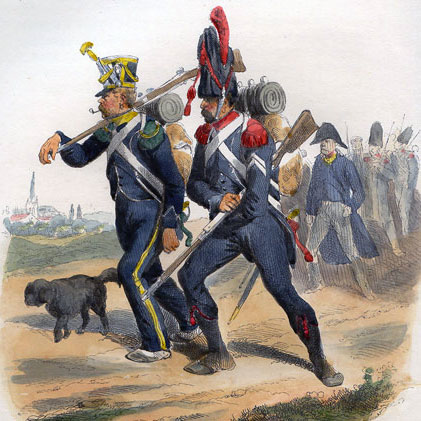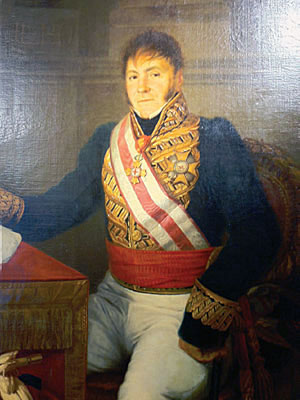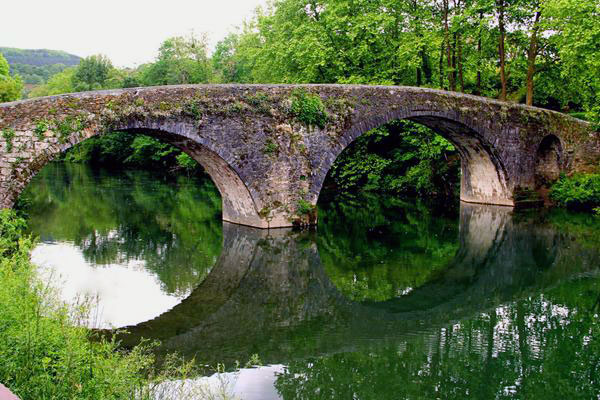The Battle fought on 31st August and 1st September 1813 along the French border, during the Peninsular War; with Spanish troops decisively repelling the French attack
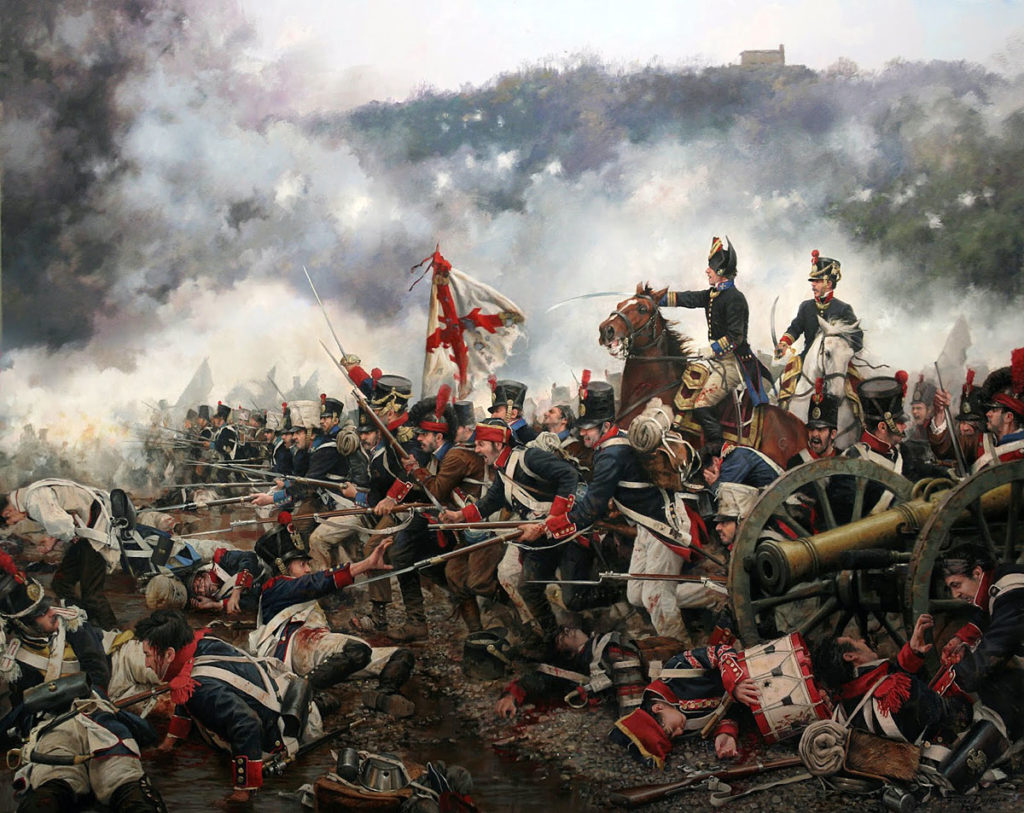
43. Podcast on the Battle of San Marcial: fought on 31st August and 1st September 1813 along the French border, during the Peninsular War; with Spanish troops decisively repelling the French attack: John Mackenzie’s britishbattles.com podcasts
The previous battle of the Peninsular War is the Battle of the Pyrenees
The next battle in the Peninsular War is the Battle of the Bidassoa
War: Peninsular War
Dates of the Battle of San Marcial: 31st August and 1st September 1813
Place of the Battle of San Marcial: In the north-west of Spain on the French border.
Combatants at the Battle of San Marcial: Spanish, British and Portuguese troops against the French.
Commanders at the Battle of San Marcial: General the Earl of Wellington against Marshal Soult. The Spanish contingent was commanded by General Manuel Freire.
Size of the armies at the Battle of San Marcial: Soult commanded 40,000 French troops of which some 20,000 were actively involved in the battle. 8,000 Spanish troops held Mount San Marcial. A further 5,000 British troops and 4,000 Portuguese troops were involved in the battle.
Winner of the Battle of San Marcial: The British, Portuguese and Spanish.
Background to the Battle of San Marcial:
Following the Battle of Vitoria on 21st June 1813, the French army was forced back across the frontier from Spain into South-Western France.
The Emperor Napoleon appointed Marshal Soult to command this French army, with instructions to re-invade Spain and, in particular, to relieve the French garrisons in Pamplona and San Sebastian, both under siege by Wellington’s British, Portuguese and Spanish army.
The Battle of the Pyrenees, fought between 25th July and 2nd August 1813, saw Soult’s attempt to reach Pamplona decisively beaten back across the border.
Soult resolved to relieve the French garrison in San Sebastian by an advance down the coast.
The trigger for Soult’s operation was to be the sound of Wellington’s guns renewing the attack on San Sebastian.
Soult faced considerable difficulties. His troops were suffering a severe loss of morale following their defeat in the Battle of the Pyrenees and he had no supplies with which to feed them, particularly once they crossed into Spain.
Soult re-organised his divisions, replacing those regiments reduced by casualties with regiments from Vilatte’s reserve corps.
Wellington, expecting a further French advance across the border and in particular an advance to relieve San Sebastian, built field fortifications in the mountainous area on the western side of the Bidassoa River, covering the main roads heading south-west into Spain and south-east through the Pyrenees.
The storming of San Sebastian took place on 31st August 1813, with the covering bombardment beginning on 27th August 1813.
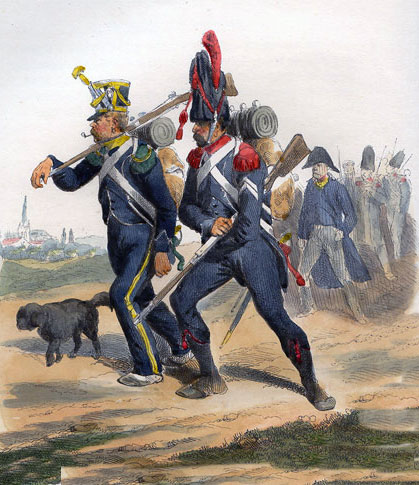
Soult’s Deployment:
Soult’s army comprised the corps of Reille, Clausel and D’Erlon.
Reille commanded the divisions of Maucune, Lamartinière and Villatte.
Clausel commanded the divisions of Taupin, Vandermaesen, Darmagnac and Maransin.
D’Erlon commanded the divisions of Conroux, Abbé and Foy (less 1,000 men left at St Jean Pied de Port).
Soult launched his attack with the corps of Reille and Clausel, while D’Erlon guarded the French left flank from positions at Sare, Ainhoa and Espilette.
Reille was to cross the River Bidassoa and advance along the coast road towards Oyarzun, with his main attack falling on General Freire’s three Spanish divisions positioned on the mountain of San Marcial, giving the battle its name.
Clausel was to cross the River Bidassoa to the south of Reille and attack Wellington’s positions around Vera, penetrating into the mountainous region of Mount Aya and on through to Oyarzun, where his corps would link with Reille’s for the final relief of the French garrison in San Sebastian.
Lack of forage for the horses prevented Soult from deploying much of his cavalry or artillery in the attack.
Awareness of the lack of supplies undermined the morale of the French soldiery even before the operation began.
The French corps assembled for the attack on 28th and 29th August 1813, with the sound of the bombardment of San Sebastian as a background.
Soult deployed 40 guns along the River Bidassoa to support Reille’s attack.
Once Reille had taken San Marcial, he was to advance along the northern side of Mount Aya towards Oyarzun.
A brigade of cavalry with two batteries of horse artillery would advance in support of Reille’s infantrymen, crossing the River Bidassoa over pontoon bridges, assembled by the French engineers while the attack progressed.
In the early hours of 30th August 1813 Soult ordered a delay of the French attack until the 31st August.
During this delay, Wellington strengthened his positions on Mount Aya, while Soult moved Foy’s Division to St Jean de Luz in support of Reille.
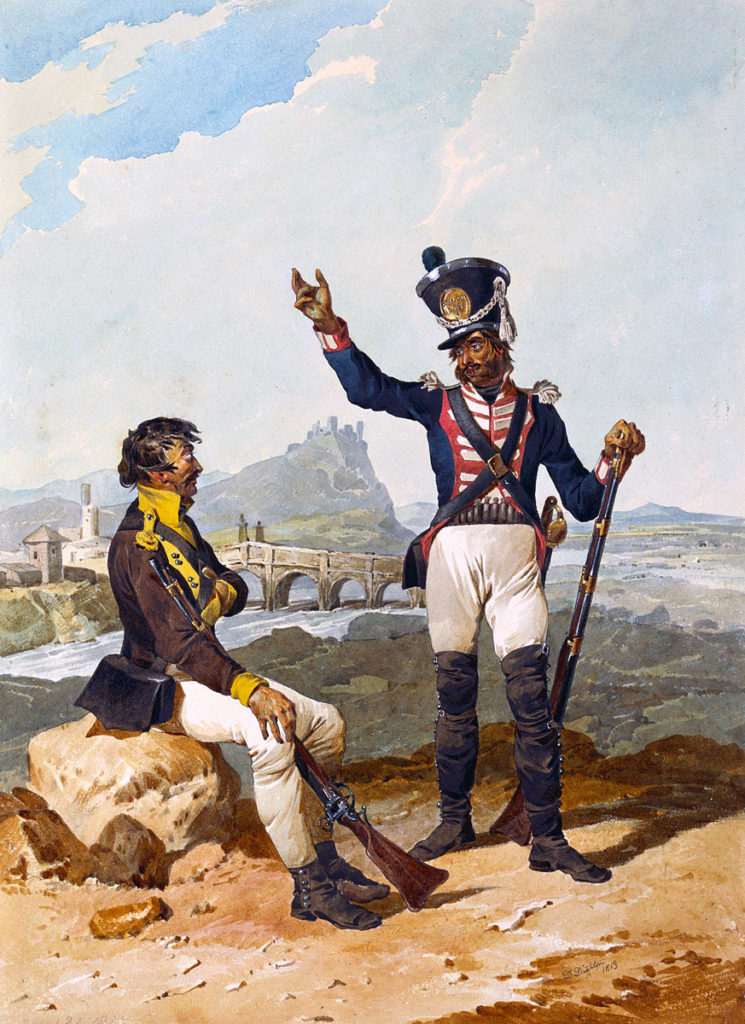
Wellington’s deployment:
Wellington’s key position, the heights of San Marcial and the town of Irun, was held by 6,000 men of three divisions from the Spanish Fourth Army, commanded by General Freire.
These Spanish divisions were supported by Howard’s and Aylmer’s British Brigades on the left and Longa’s Spanish Division on the right.
Further formations came up on Freire’s right; two brigades of Cole’s British Fourth Division, Miller’s Portuguese Brigade and Inglis’s Brigade from the Seventh Division.
These deployments took Wellington’s line along the lower Bidassoa as far south-east as Lesaca.
On the east bank of the Bidassoa, the British Light Division lay along the ridge of Santa Barbara, running three miles west to east from the river to Mount Ibantelli. From this position, the Light Division was able to menace the flank of Clausel’s advance.
Further to the south-east, the divisions of Dalhousie (Seventh Division), Colville (Sixth Division) and Hill (Second Division) were ordered to demonstrate against Soult’s left flank.
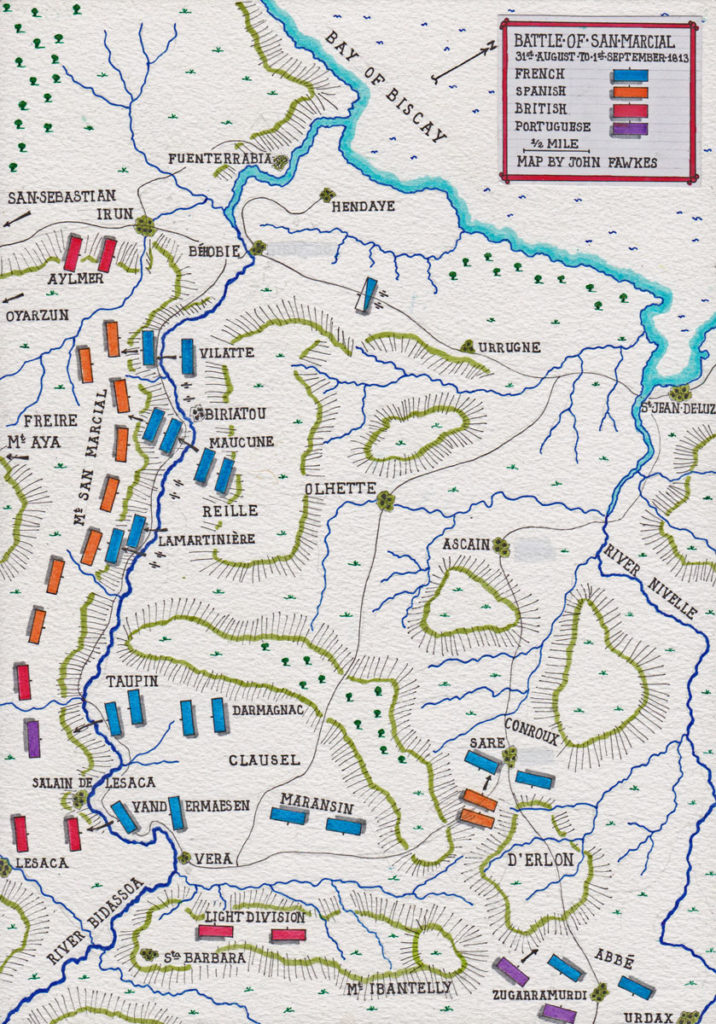
The Battle of San Marcial:
The day of the battle, 31st August 1813, dawned with a dense fog across the battlefield.
Clausel formed his corps opposite Vera before dawn; the divisions of Taupin, Darmagnac and Vandermaesen, with Maransin’s Division in reserve.
At 7am the fog cleared and each side was enabled to see the other.
Wellington made various changes in his line to meet the impending French attack.
Inglis and Dalhousie marched their troops to Salain de Lesaca, across the Bidassoa from Vera.
Kempt, in temporary command of the Light Division, was ordered to attack the French in Vera or cross the River Bidassoa to join Inglis, as seemed appropriate to him. He chose to move a brigade across the river.
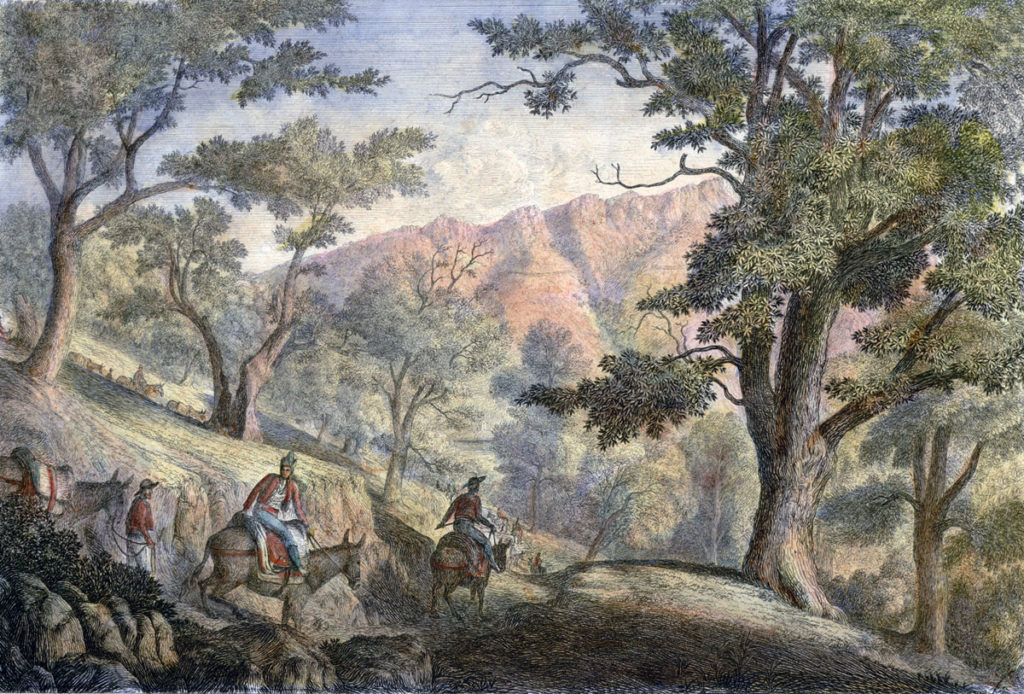
Clausel withdrew Maransin’s Division from his attack to counter the British Light Division, while Darmagnac’s, Taupin’s and Vandermaesen’s Divisions crossed the Bidassoa by the fords below Vera, covered by the fire of two batteries positioned on the east bank of the river.
Between 8am and 10am, Darmagnac’s Division drove Inglis’s Brigade back from its positions along the river, after hard fighting, Inglis taking up a new position to the right rear of Cole’s Fourth Division.
The British 51st Regiment covered Inglis’s retreat and suffered the greatest number of the 300 casualties suffered by the brigade.
Clausel, confronted by Wellington’s main line, decided not to press his attack further until Reille took the San Marcial position.
The British Light Division remained on the Santa Barbara Heights, inactive on Wellington’s command, but threatening Clausel’s left rear, while two regiments, the 43rd and 1st/95th crossed the river by the Lesaca bridge to maintain contact with Inglis.
Further north, Reille’s attack across the River Bidassoa, led by Lamartinière’s Division, crossed the river before daybreak by the three fords situated up-stream from the French town of Biriatou.
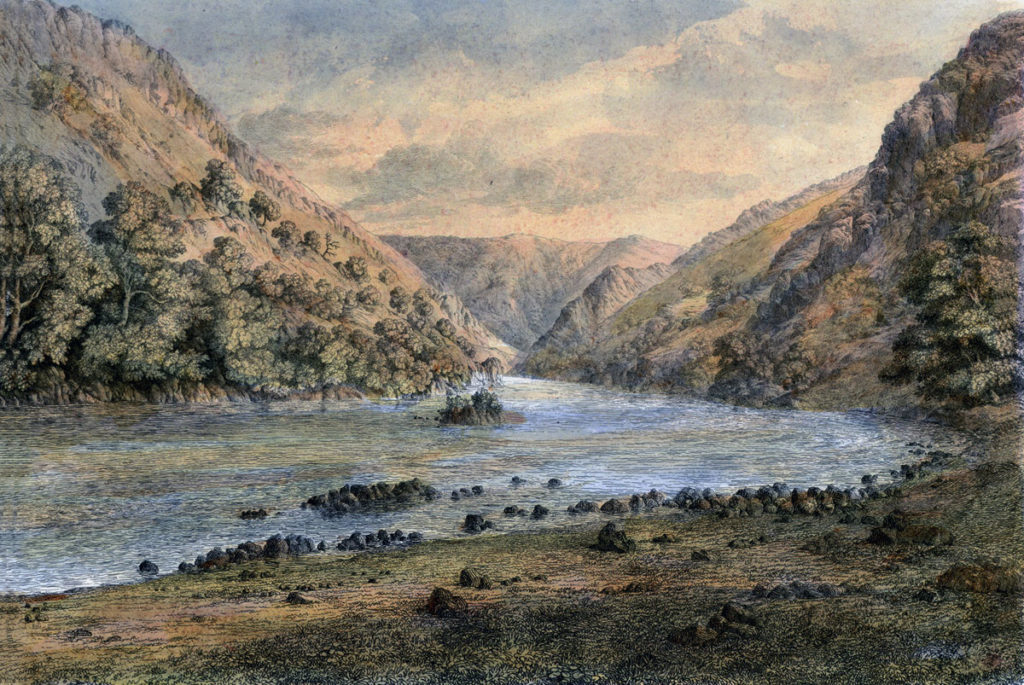
Maucune’s Division crossed the Bidassoa in support of Lamartinière, while Vilatte’s Division crossed downstream of Biriatou, to cover the building of the pontoon bridges needed to enable the supporting cavalry and artillery to cross the river.
Lamartinière’s Division attacked the left of Freire’s Spanish divisions, while one brigade of Maucune’s Division attacked the right. Maucune’s second brigade remained in reserve.
The slope up to the Spanish position on Mount San Marcial was steep and covered in brushwood, preventing the French troops from maintaining column formations.
Reaching a point two thirds of the way up the slope, the French, in considerable confusion, were charged by the Spanish and driven back to the bottom of the mountain.
Here, the French troops were rallied. General Guy brought forward King Joseph’s Bodyguard, a unit in Vilatte’s Division and led them with skill and panache up the mountainside against the left of the Spanish position, reaching the ridge beneath the summit.
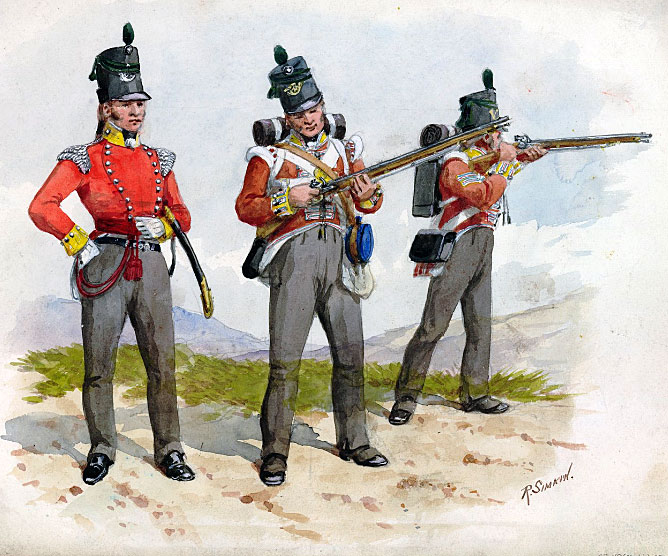
The British 85th Regiment came forward from Aylmer’s Brigade to bolster the wavering Spanish line.
Freire sent a request to Wellington for additional support, but before this request was received, the Spanish divisions launched their second counter-attack against Lamartinière and Pinoteau.
Again, the French were driven down the mountain. This time, there was no rallying the beaten French infantry, who rushed into the river to escape.
Wellington, in answer to Freire’s request for support, pointed out that Freire had won the victory and should retain all the honour for his Spanish troops.
The French engineers working on the pontoon bridges in the River Bidassoa cut loose the pontoons and used them to rescue their infantry comrades attempting to swim back across the river. Several pontoons sank through overloading.
Only after some hours could the French troops be rallied on the east bank of the river, but without any realistic expectation that they would resume the battle.
Further to the south-east, there were engagements between Wellington’s troops and D’Erlon’s corps. The Portuguese brigades of the Sixth and Seventh Divisions drove Abbé from Zugarramurdi and burnt his camp at Urdax and Giron’s Spanish Division engaged Conroux at Sare.
The defeat of Reille’s attack on San Marcial caused Soult to accept the failure of his attempt to relieve San Sebastian and to order his troops back across the River Bidassoa.
At around this time a ferocious rain storm burst over the battlefield. Branches were torn from trees and very quickly the River Bidassoa and other rivers and streams in the area became impassable torrents.
At 5pm Clausel received Soult’s order to retreat.
Clausel’s three divisions on the west side of the River Bidassoa, Darmagnac’s, Taupin’s and Vandermaesen’s, withdrew to the fords they had used to cross the Bidassoa in the morning, to find them impassable, with a depth of more than six feet of torrential water.
Clausel’s men spent the night on the west bank of the Bidassoa and early on 1st September 1813 marched to the bridge at Vera.
Action at the Bridge at Vera:
In the early hours of 1st September 1813, Vandermaesen’s Division led Clausel’s Corps to Vera, where Captain Daniel Cadoux’s detached company of the British 2nd/95th Rifles held a loopholed house at the eastern end of the bridge.
Two British riflemen, posted on the bridge, attempted to give the alarm by firing their weapons, but their powder was wet from the rain and the two men were bayonetted by the advancing French.
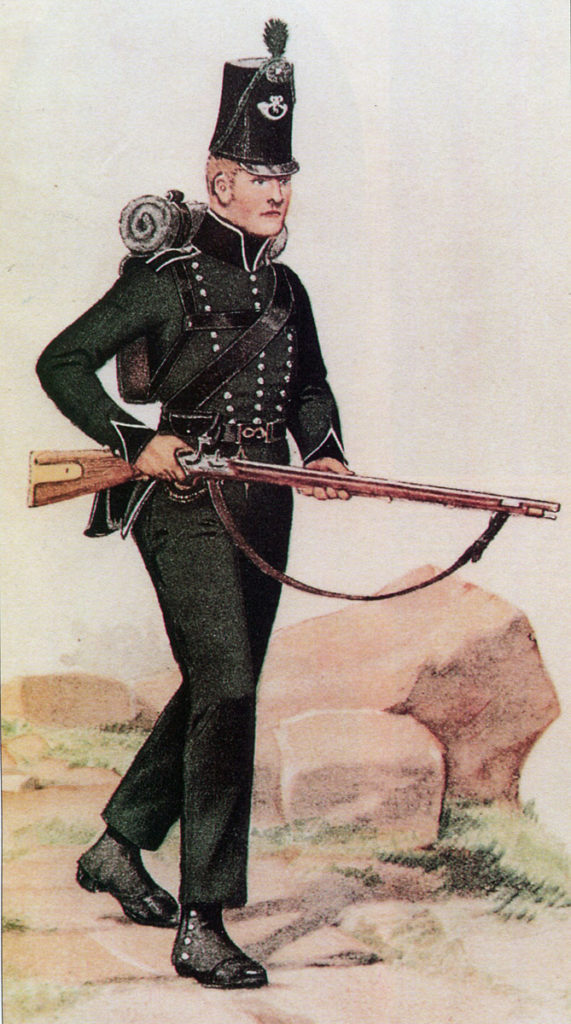
However, the Rifles were on the alert and Cadoux’s Company stood to and drove the head of Vandermaesen’s column back across the bridge, firing from the loopholed house, a fire the French were unable to return due to the driving rain.
Cadoux’s men held the French back from crossing the bridge for an hour until the British brigade commander, Major General Skerrett, sent a message ordering Cadoux to retire to the brigade positions on the Santa Barbara heights.
As the fire of his company of riflemen was preventing the French from crossing the bridge, Cadoux ignored the order.
The French commander, Vandermaesen, was forced to deploy his entire division in the attacks on the bridge.
The coming of daylight and the lifting of the rain enabled the French artillery to open a bombardment of Cadoux’s post.
Skerrett sent a second message to Cadoux, ordering him to withdraw from Vera.
This time Cadoux complied, but the withdrawal was difficult as French troops were across the river, even though Skerrett sent forward a further company of the 95th Rifles to assist Cadoux’s men.
Cadoux and 16 of his company were killed, with 3 officers and 43 men wounded.
General Vandermaesen was killed conducting the attacks on the Bridge at Vera.
With Vera clear of British troops and the bridge in French hands, Clausel’s Corps was able to withdraw across the River Bidassoa into France, bringing the battle to a close.
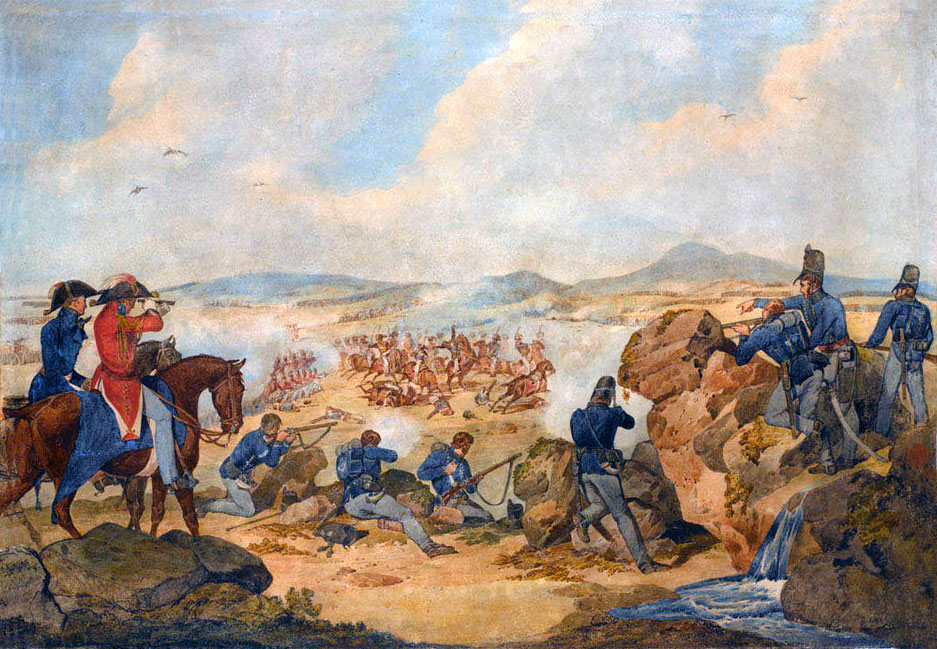
Casualties at the Battle of San Marcial:
French casualties from the two days’ fighting were 467 killed, 2,984 wounded and 357 captured.
Officer casualties were high (29 killed and 147 wounded).
1,643 of the casualties came from Lamartinière’s Division’s attack on the Spanish position on Mount San Marcial.
General Vandermaesen was killed and General Lamartinière died of wounds.
Three brigade commanders were wounded, two colonels killed and nine regimental and battalion commanders wounded.
Spanish, British and Portuguese casualties were around 2,600, most being Spanish.
Fortescue points to the high proportion of French officer casualties as an indicator of low morale in the French regiments.
The Aftermath to the Battle of San Marcial:
The battle marked the end of Napoleon’s ambitions in Spain.
The French invasion of the Iberian Peninsula was over.
Soult was now faced with Wellington’s inexorable invasion of Southern France.
Battle Honours and Medal for the Battle of San Marcial:
The Battle of San Marcial is not a battle honour for British regiments, nor is it a clasp on the 1847 General Service Medal.
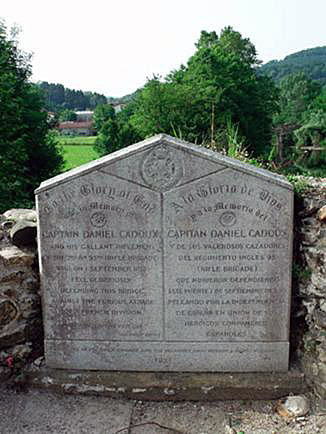
Anecdotes and traditions from the Battle of San Marcial:
- The conduct of Freire’s Spanish troops, in repelling Reille’s attacks on Mount San Marcial, was particularly meritorious as the Spanish troops were starving due to the neglect of their government to provide them with supplies.
- Daniel Cadoux, the officer who held the bridge at Vera, was from Aylesbury in Buckinghamshire. He was commissioned into 2nd/95th Rifles on 2nd February 1801. Cadoux fought at the Battles of Barossa, San Millan, Vitoria and the Pyrenees.
- Major General Skerrett was heavily criticised for failing to provide Captain Daniel Cadoux’s company with greater support in the action of the Bridge at Vera, particularly by the 95th. Skerrett returned to England the same month and was replaced as brigade commander by Colonel John Colborne, the inspiring commanding officer of the 52nd Light Infantry. Skerrett commanded a brigade in the attack on Bergen op Zoom in 1814, where he was killed.
- On 25th August 1813, shortly before the Battle of San Marcial, the officers of all three battalions of the 95th Rifles celebrated the anniversary of the raising of the regiment with a dinner. Two trenches were dug facing each other and the seventy officers sat on the edges with their legs in the excavated areas. The food and drink was placed on the surface between them. The dinner was punctuated by loud cheers, causing the neighbouring French regiment to remain on the alert for much of the night.
- The 85th Bucks Volunteers, in 1813, was selected by the Duke of York to become light infantry and given the title of ‘the Duke of York’s Own Light Infantry’. All the officers were replaced by officers selected by the Duke of York. The 85th arrived in Spain in Autumn 1813 as part of Aylmer’s Brigade.
References for the Battle of San Marcial:
See the extensive list of references given at the end of the Peninsular War Index.
The previous battle of the Peninsular War is the Battle of the Pyrenees
The next battle in the Peninsular War is the Battle of the Bidassoa
43. Podcast on the Battle of San Marcial: fought on 31st August and 1st September 1813 along the French border, during the Peninsular War; with Spanish troops decisively repelling the French attack: John Mackenzie’s britishbattles.com podcasts
